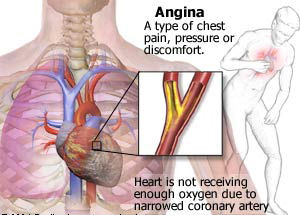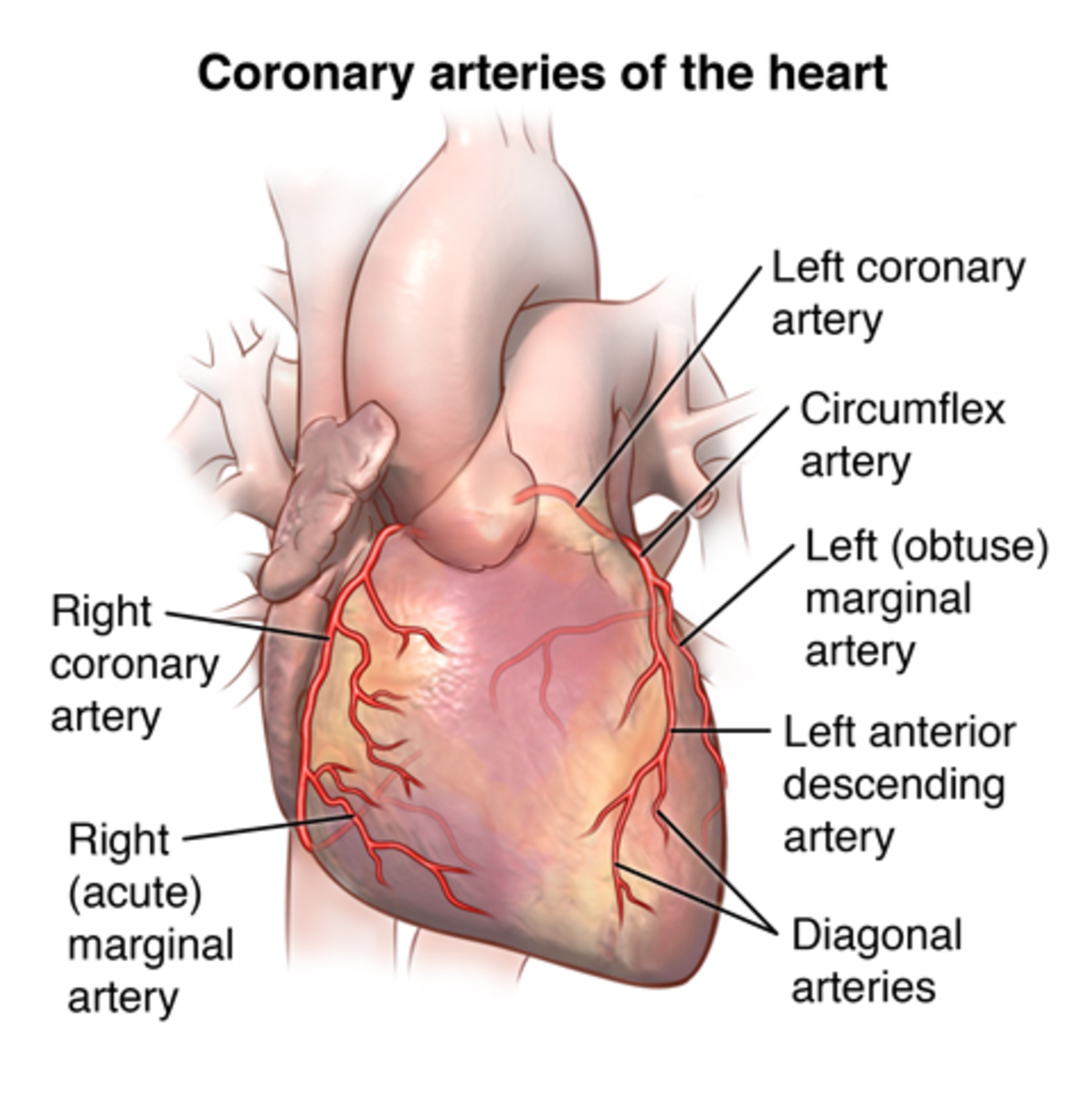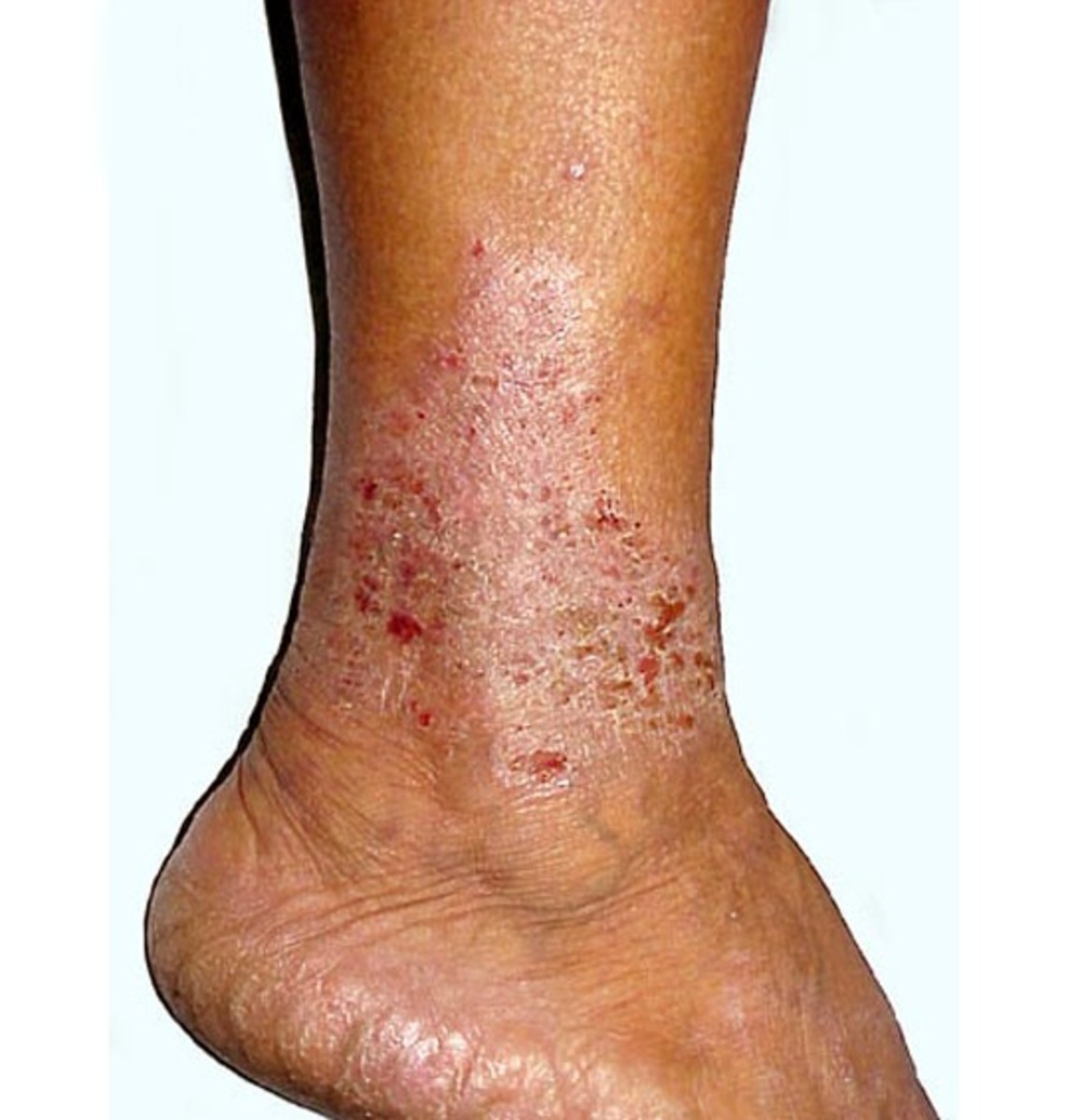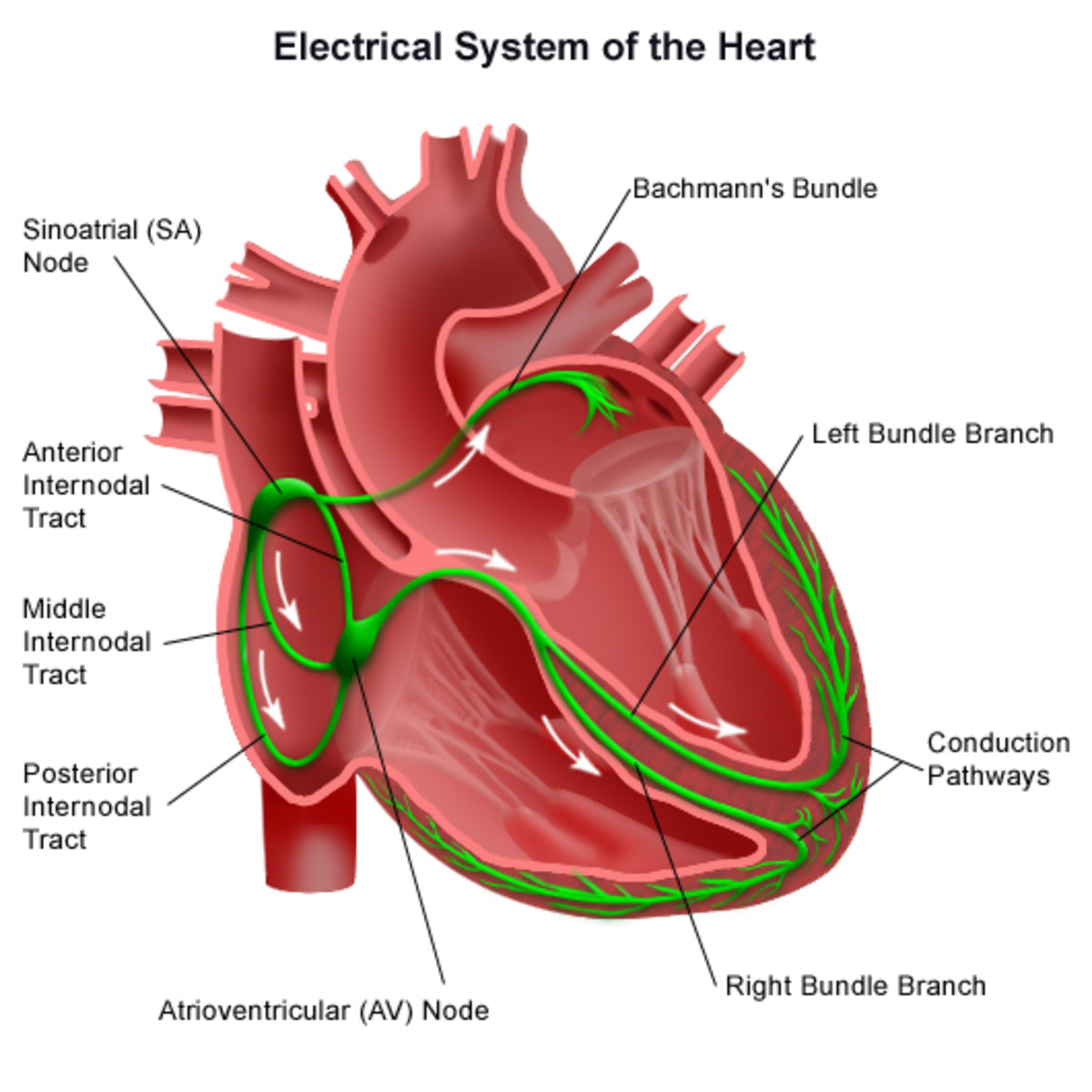Angina Pectoris: Symptoms, Treatment, Plus 10 Preventive Health Measures
Angina pectoris is a chest pain that results from temporary difficulty in the coronary arteries. In such cases, the arteries are incapable of supplying a sufficient amount of oxygen-rich blood to the heart muscle. People with angina pectoris often have a disorder that underlies the pain. High blood pressure, anemia, arteriosclerosis (hardening of the arteries), and diabetes are common causes.
Symptoms
The person suffering from angina pectoris first notices a chest pain that usually occurs behind the sternum (breastbone) in the area of the heart. The pain often travels down from the left shoulder as far as the elbow or wrist. However, the pain may be transmitted to areas away from the heart muscle. The sensation is usually one of crushing viselike pain as opposed to sharp acute pain. The condition may last for as long as 30 minutes, but in most cases its duration is only a few minutes.
Almost without exception, angina occurs after strenuous exercise, a heavy meal, or under unusual emotional stress. Under these circumstances, an increased demand comes from the heart for oxygen but is not accompanied by an increase in blood circulation from the heart muscle. Once the precipitating factor is removed -- the exercise is stopped, the food digested, or the emotional crisis is past -- the pain subsides.
When the individual is examined, actual physical evidence of the condition may not be found. There may be evidence of arteriosclerosis, some from of heart disease, or lesions of the heart muscle called myocardial infarction .
A discussion with the patient will determine if angina pectoris occurs under the conditions mentioned and that relief comes when the demands on the heart disappear. The time of the day the pain occurs is often more significant than the incidence of pain from one day to the next.
For example, if someone experiences angina pectoris after a heavy breakfast or after running to work in the morning, it indicates that stress is placed on the heart as the person goes from a restful state to a highly active one. The same person may be able to eat a comparable evening meal or hurriedly go home from work after a full day of activity and not experience any pain.
Because the medical profession is aware of all these problems, special tests have been devised for the diagnosis of angina pectoris. Patients are put through a series of carefully designed and graduated stress studies. The person may be asked to walk in a treadmill carrying increasingly heavy loads and to vary his pace. He may also be asked to pedal an exercise bicycle at different rates of speed. The physician watches the individual as he performs these tests to observe signs of stress and changes in the patient.
He also attaches monitoring devices to the patient that test his blood pressure, heart rate and pulse. Thus the doctor can ascertain how much stress the person's heart can take before angina pectoris is present and under what conditions the seizures occur.
Treatment and Prevention
Treatment begins with educating the victim about the causes and condition and the ways of preventing its occurrence. He learns to restrict his activity to the amount of exertion his heart can tolerate and to gradually work up to any strenuous physical activity.
However, equally important is that the sufferer does not completely give up all physical exertion, since complete lack of exercise diminishes the heart muscle's capacity to function.
The patient must also learn to avoid situations that will cause him emotional stress. Dietary considerations are one of the most important aspects of preventive measures. Most people who suffer from angina pain are overweight and therefore must reduce. Once the excess weight is lost, the person should watch his caloric intake and especially his intake of fats. Alcoholic beverages may be taken only in moderation. Smoking should be discontinued.
If one is able to adjust his life so that he eliminates as far as possible the condition that bring about attacks , he will be able to prolong his life and probably to markedly reduce the frequency of such attacks.
When one does have an attack of angina pectoris, medication can relieve the pai. The most widely used is nitroglycerin given in tablet form. The table is inserted under the tongue; and as it dissolves, it quickly brings cessation of pain, usually in less than two minutes.
A person -- knowing he has nitroglycerin with him at all times -- will tend to have a reduced level of anxiety and therefore reduced frequency of attacks. Nitroglycerin dilates or relaxes the coronary arteries so that they widen and permit a greater flow of blood. A headache may occur as a side effect of taking nitroglycerin.
Propanolol is another drug that is used in the treatment of angina pectoris. Unlike nitroglycerin - which is used to treat an attack - propanolol is employed to prevent attack. It is taken orally every day, and acts on the sympathetic nervous system to retard the heart rate and therefore decrease the amount of work that has to be done by the heart muscle.
Isosorbide dinitrate is another drug used to prevent angina pectoris. It acts to dilate the coronary arteries, which in turn allows more oxygenated blood to reach the heart.
Both propanolol and isosorbide dinitrate have some undesirable side effects, and must be used only under the careful supervision of a doctor.
In some case, surgery is performed to remove some of the thickened wall of an artery or to implant a special artery in a specific area of the heart.
10 Preventative Health Measures for Angina
1. Do not undertake strenuous, sudden, or prolonged physical activity which may place a heavy strain on your heart.
2. Eat meals on a regular schedule, without rushing and without overeating.
3. Try to keep your weight down, especially if you are over 40. People who are overweight are much more susceptible to angina pectoris.
4. After eating a heavy meal, do not attempt physical activity for at least 30 minutes.
5. Arrange your workday so that it leaves you time for rest periods. Try to avoid situations that will cause you emotional stress.
6. Observe general health rules to protect yourself as far as possible from the risk of infection.
7. Avoid constipation.
8. Sleep in a well-ventilated room and try to get at least eight hours of sleep at night.
9. Keep fit with a regular program of moderate exercise.
10. Make certain that you see your doctor for regular medical checkups.










